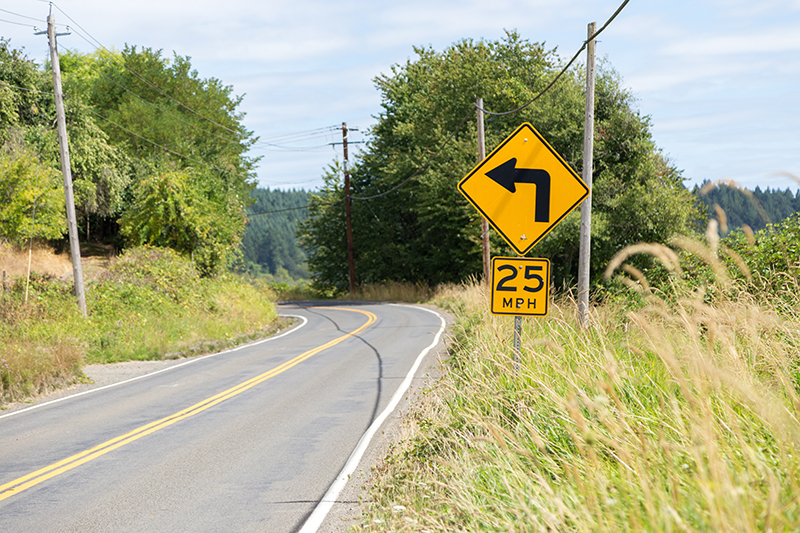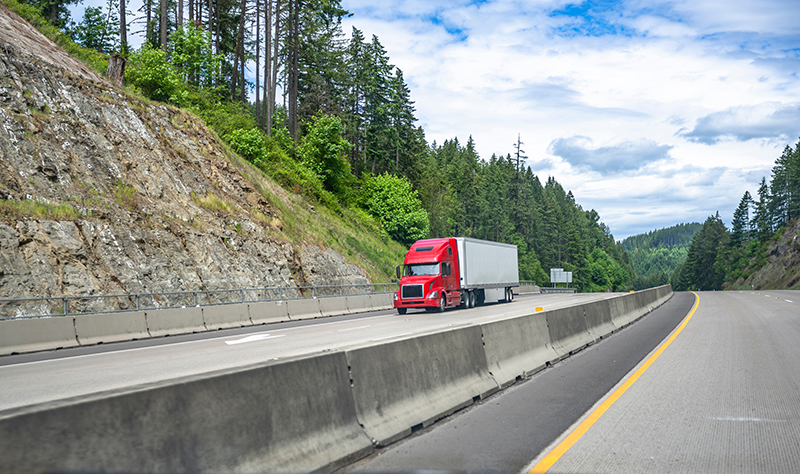Safe driving in Oregon starts with you. With Oregon’s mountainous terrain, winding roads, and ever-changing weather patterns, it’s necessary to stay vigilant and drive safely to protect yourself and others.
In 2023, Oregon recorded 589 traffic fatalities, showing a decrease compared to the previous year’s figure of 601. [1]
Make a commitment to follow safe driving tips and share them with your friends and family to create a safer road environment for everyone in Oregon.
Tips for Safe and Responsible Driving in Oregon
Whether you’re a resident or a visitor, mastering the following tips for safe driving in Oregon helps protect yourself and others on the road. Let’s explore key safety tips to enhance your driving skills and promote road safety across the landscapes of Oregon.

Be Aware of the Weather Conditions
Oregon’s weather can be unpredictable, with sudden rain, fog, and snow changes. Therefore, stay informed about weather conditions before starting your journey. Keep an eye on weather forecasts and adjust your driving accordingly. If you are driving on icy roads, take extra time.
Check the weather conditions to ensure a safe journey when preparing to drive.
- Look for any severe weather warnings or advisories that may affect your route
- Check your route for any road closures, construction, or accidents that may impact your journey
- Choose the safest and most reliable route, even if it may be longer
- Share your estimated time of arrival and the route with friends or family members
- Pack items such as extra food, warm clothing, a flashlight, ice scraper, and a fully charged mobile phone
Slow down and maintain a safe distance from other vehicles during adverse weather, using your headlights and windshield wipers as necessary. Exercise caution and avoid unnecessary risks while driving on slippery roads and areas with adverse weather conditions.
Respect Speed Limits and Road Signs
Obeying speed limits and road signs is significant for maintaining safety on Oregon’s roads. Speed limits are set based on road conditions, traffic patterns, and the safety of all road users. Here’s the statutory speed limits followed by Oregon state:
- 15 mph in alleys or narrow residential roadways
- 20 mph in business districts
- 25 mph in public parks
- 25 mph in highways in residence districts if highways are not an arterial highway
- 65 mph on interstate highways
- 55 mph in all other locations [2]
Driving above the speed limit significantly increases the risk of accidents. Always be aware of posted speed limits and follow the instructions provided by road signs to ensure safer driving.

Practice Defensive Driving Strategies
Defensive driving involves anticipating the actions of other drivers, watch for potential hazards, and maintain a safe distance from other vehicles.
Avoid distractions while driving, such as using mobile devices or engaging in conversations that may divert your attention from the road. Defensive driving allows you to react effectively to unforeseen circumstances and minimize the risk of accidents.
Maintain Vehicles Properly
Maintaining a vehicle’s condition requires maintenance of brakes, tires, lights- fog lights, tail lights, brake lights, and other essential components ensures that the vehicle is in optimal working condition, minimizing the risk of accidents caused by mechanical failures.
Regularly inspecting fluids is essential in the Pacific Northwest due to the heavy rainfall. Check and replace engine oil, coolant, transmission, and brake fluid to prevent damage and ensure your drive is uninterrupted by mechanical error. Checking and topping up windshield wiper fluid can also prevent issues relating to poor visibility.
Be Cautious on Mountain Passes
Oregon’s mountain passes can be challenging, especially during winter months. Keep tire chains handy, and always drive slowly when descending steep mountain slopes to maintain control of your vehicle.

Use GPS
The one-way streets in Oregon can be confusing, especially for those unfamiliar with the area. A GPS ensures you take the correct turns and stay on the designated route, preventing unnecessary complications. Studying the map or using a GPS allows you to anticipate turns and avoid getting stuck in the wrong lane or missing important junctions.
Be Aware of Surroundings at All Times
Being aware of surroundings not only ensures your safety but also the safety of other road users. Maintaining a safe distance between vehicles is a vital aspect of driving. By being aware of surrounding traffic, you can anticipate any sudden lane changes, reduce the risk of collisions, and have enough time to react.
Similarly, when merging into traffic, being conscious of vehicles on the highway will help avoid accidents. The proper use of mirrors is essential in maintaining awareness of the surroundings. Mirrors provide valuable information about what is happening behind and to the sides of a vehicle and can assist with avoiding blind spots.
Watch for Cyclists and Pedestrians
When driving on the roads of Oregon, it is vital to be aware of and alert to the presence of cyclists and pedestrians. They share the road with cars and are more vulnerable to injury.
Slow down when navigating through populated areas to avoid any potential accidents with jaywalkers. Being attentive while driving can help prevent unfortunate incidents that could harm pedestrians or cyclists. Yield to pedestrians at crosswalks, allowing them safe passage.
Cyclists often share lanes with cars due to limited available space. Maintain an appropriate distance from cyclists and refrain from sudden movements that may startle them.

Contact Goldberg & Loren if you or a loved one experiences an auto accident in Oregon. Stay safe!
FAQs
Some important tips for driving safely in Oregon include adjusting to weather conditions, respecting speed limits, staying vigilant on rural roads, being cautious on mountain passes, and sharing the road with cyclists and pedestrians.
Rural roads in Oregon often lack lighting and have narrower lanes. Being vigilant on these roads, using headlights, and watching for wildlife crossing can help avoid accidents.
When driving on mountain passes in Oregon, it's important to check weather and road conditions beforehand, carry tire chains in case of snow, and drive slowly when descending steep slopes to maintain control of the vehicle.
Sources:
[1] Traffic Safety Facts, Crash.Stats. (n.d.). National Highway Traffic Safety Administration. Retrieved April 14, 2024, from https://crashstats.nhtsa.dot.gov/Api/Public/ViewPublication/813561
[2] ORS 811.111 – Violating a speed limit. (n.d.). https://oregon.public.law/statutes/ors_811.111














